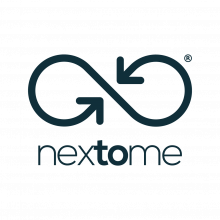
Objectives of the service
During the COVID-19 global pandemic, the large amount of infection cases and the emergency context in general, revealed some difficulties in the management of sanitary protocols, and in particular for:
- the detection of contagious patients (symptomatic, asymptomatic, paucisymptomatic patients);
- the monitoring and treatment of quarantined patients by General Practitioners (GPs);
- the containment of infection among healthcare workers;
- the collection of epidemiological data.
In order to overcome these difficulties, Telemachus had the ambition to:
- simplify the communication between patients and doctors by providing a continuous screening and remote monitoring tool to detect the main vital parameters and by preventing and patients’ doctors from cross-contagion.
- facilitate prompt medical response by implementing location-based services for emergency and by helping health authorities to intervene when a patient with critical vital parameters is detected.
- monitor the health conditions of healthcare workers in order to rapidly identify cases of infection and prevent the propagation inside hospitals
- collect and provide relevant data (vital parameters measurements, patients risk profile information, clinical data), filtered and validated by doctors, to health authorities in order to conduct epidemiological analyses.

Users and their needs
Italian health authorities and hospitals, doctors and patients are the three main users.
The main identified needs regarding the health authorities and hospitals include:
- provide more accurate data for epidemiological purposes, such as modelling the propagation of outbreak and the interpolation with exogenous factors (e.g., environmental data);
- manage and contain the increased demand of healthcare services during the outbreak so as to continue providing an equal access to care to all patients managing them by remote;
- better manage the increased risk of infection among healthcare workers and avoid cases of infection propagation inside hospitals;
- monitor the conditions of self-isolated or de-hospitalized patients at home.
The main identified needs regarding doctors include:
- facilitate early diagnosis, giving access to diagnostic tests primarily to symptomatic patients with high risk profile;
- respond to difficulties in managing ordinary tasks (due to exponential grow of plausible infected patients) and reduce risk of infection for doctors, and consequently for patients;
- monitor patient’s health conditions and cover the lack of adequate tools ((especially for general practitioners) to organize home care due to high demand.
The main needs of patients include:
- get a fair and equal access to care considering the difficulties to be hospitalised due to the saturation of healthcare services caused by COVID19 emergency;
- be monitored (even in quarantine) and receive adequate care;
- reduce the risk to infect other people.
Service/ system concept
Telemachus is based on an “hub-and-spoke” model, typically involving arrangements whereby one subject acting as a principal base (health authorities) provides centralised support or activities to satellite subjects (doctors) which are connected to the principal base.
The patient can use both a mobile app and a smart bracelet in order to be remotely treated and monitored. The mobile app is a telemedicine interface helping patients to communicate with doctors, preventing physical contacts. The smart bracelet has Bluetooth connectivity, also used for indoor positioning, GPS/Galileo for outdoor positioning and biomedical sensors measuring heartbeat, SpO2, body temperature and ECG, which are relevant vital parameters to be monitored for most pathologies.
Both the mobile app and the smart bracelet are connected to a cloud server embedded with real-time analytics, AI and data history. A dashboard used by doctors and health authorities is used to manage the collected and processed data.

Space Added Value
Telemachus is making use of the latest developments in the field of Satellite Navigation (SATNAV) as the service benefits from a patented technology that utilises smartphone sensors and low-signal Bluetooth beacons (leveraged by physical models and AI algorithms), with the aim to address the following critical needs:
- contain the diffusion of contamination through the localisation and monitoring of infected patients in indoor contests;
- safeguard the healthcare workers’ health, by tracking their movements within the hospital departments and their potential contacts with infected patients.
Telemachus is making use of localisation algorithm both for indoor and outdoor positioning, allowing a seamless switch between Bluetooth Low Energy (BLE) and the Global Navigation Satellite System (GNSS) signal. Wherefore, the interoperability between the GPS and Galileo is the enabler of the outdoor navigation tracking.
Moreover, Telemachus also takes advantage of the Teseo GNSS developed by STMicroelectronics. Hailed as the latest generation of ST's GNSS Integrated Circuits (ICs), Teseo III permits carrier-phase tracking with a reduced consumption of the device’s power whilst achieving advanced accuracy for tracking applications. The smart bracelet of the system can hence support the Teseo III platform in order to guarantee exactitude and accuracy in outdoor tracking, as a result of the use of the most modern technology available through the Galileo infrastructure.
Current Status
Telemachus has been tested in a demonstration project held in Italy, monitoring more than 440 people during a 6 months pilot trial, reaching a widespread appreciation, both from users and the general public. The team has now the confirmation that the system operatively works in a real environment. As regards the fight against the spread of COVID-19 disease, the remote management of infected patients ensured by Telemachus has made the intervention of GPs safer and faster, whereas the monitoring of a health facility simplified the identification of infection among the healthcare workers. Moreover, the bracelet has already obtained the medical device certification (class 2a). The team keeps working on developments and integrations on the system, based on users’ feedbacks in order to improve the product and enter in the commercialisation phase.










